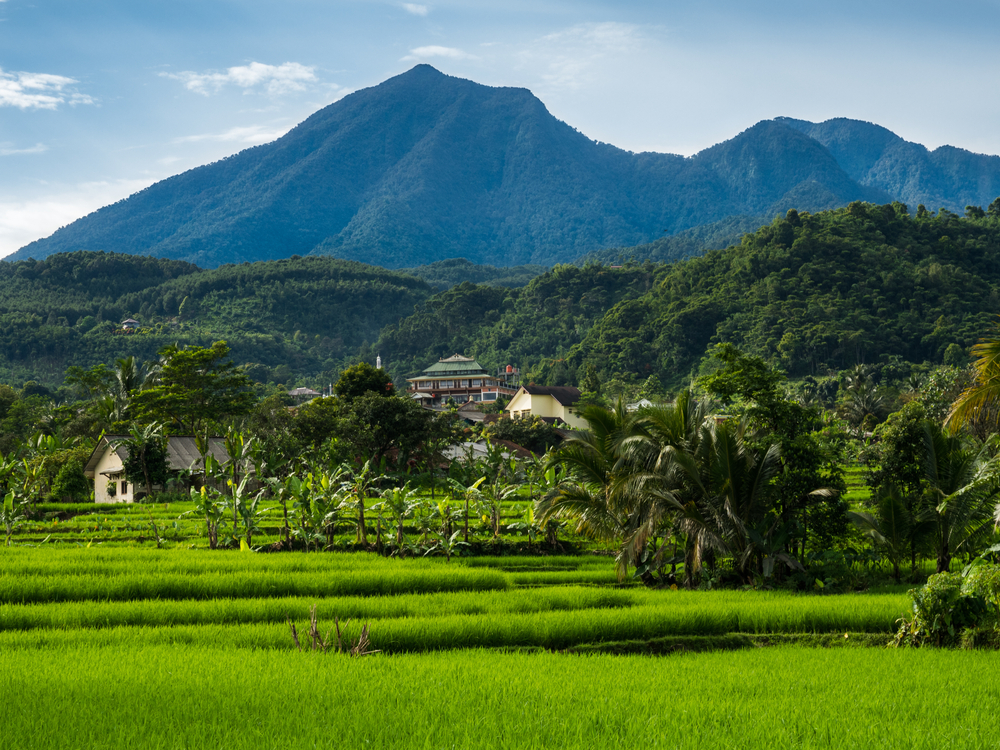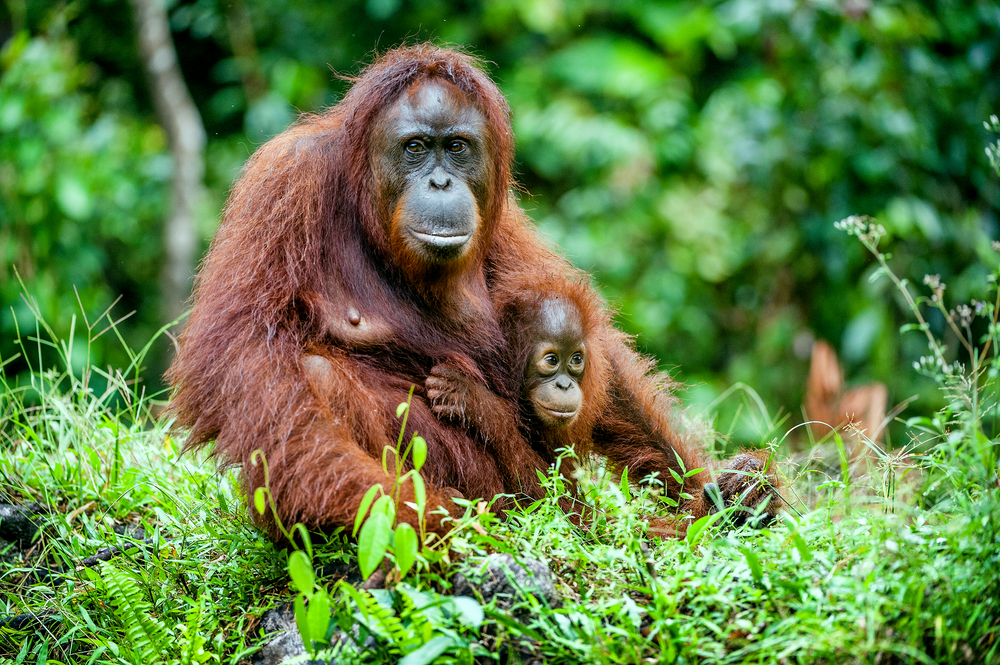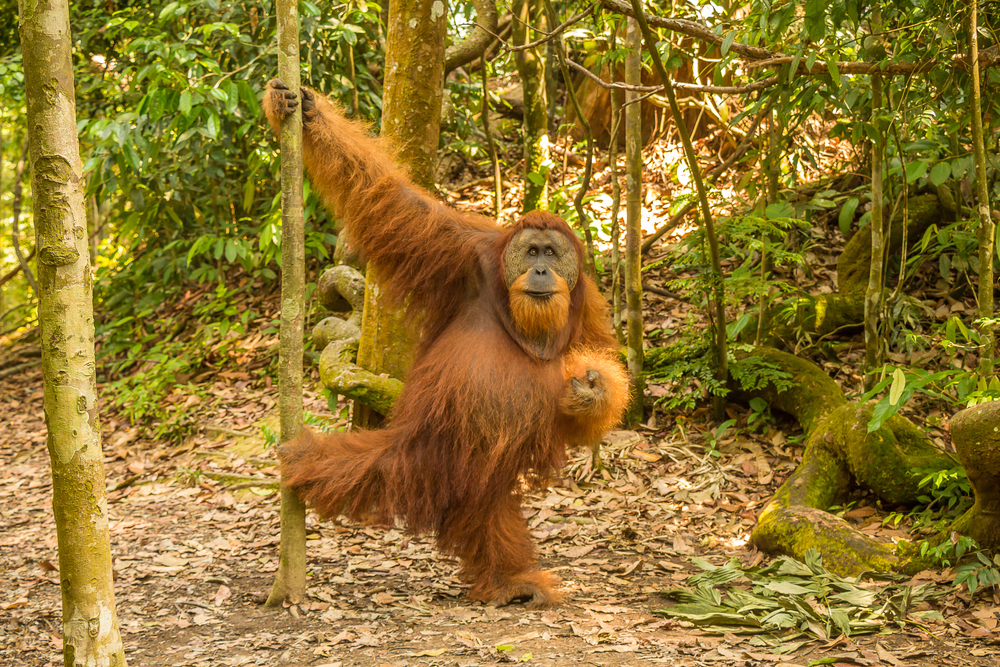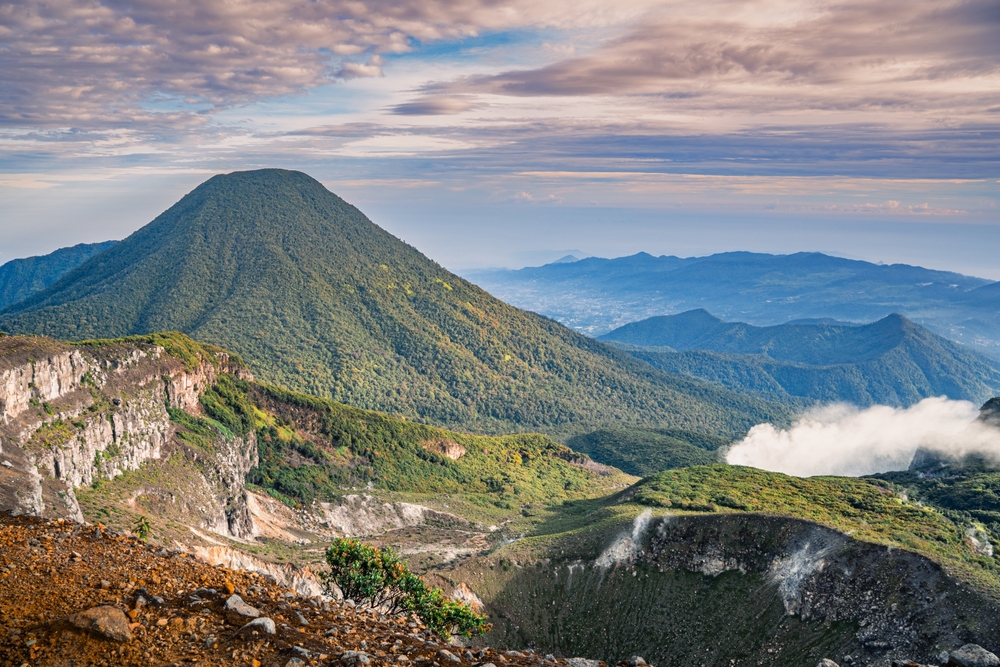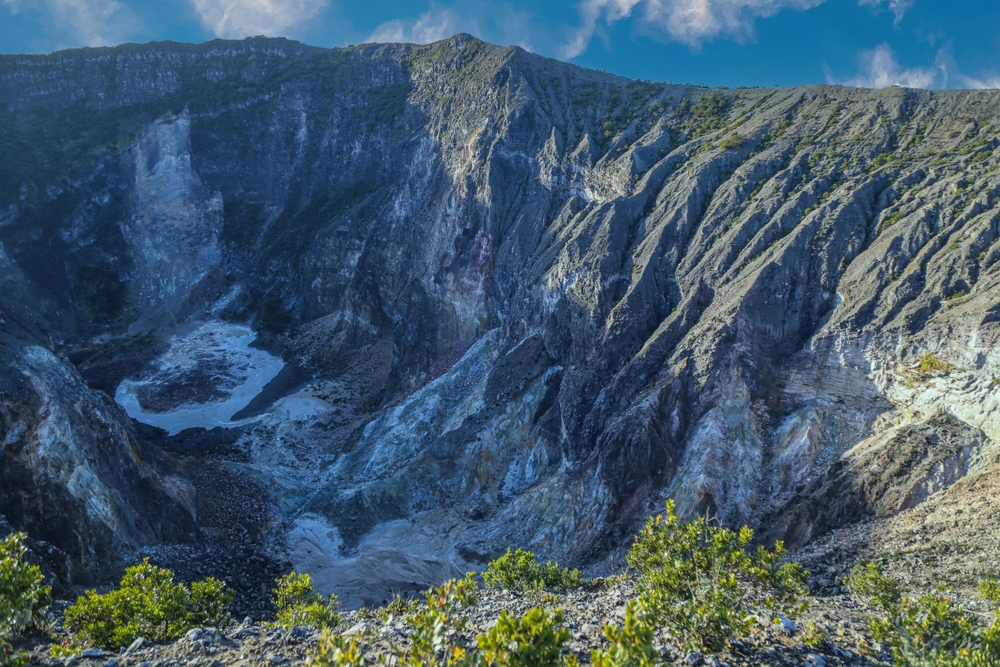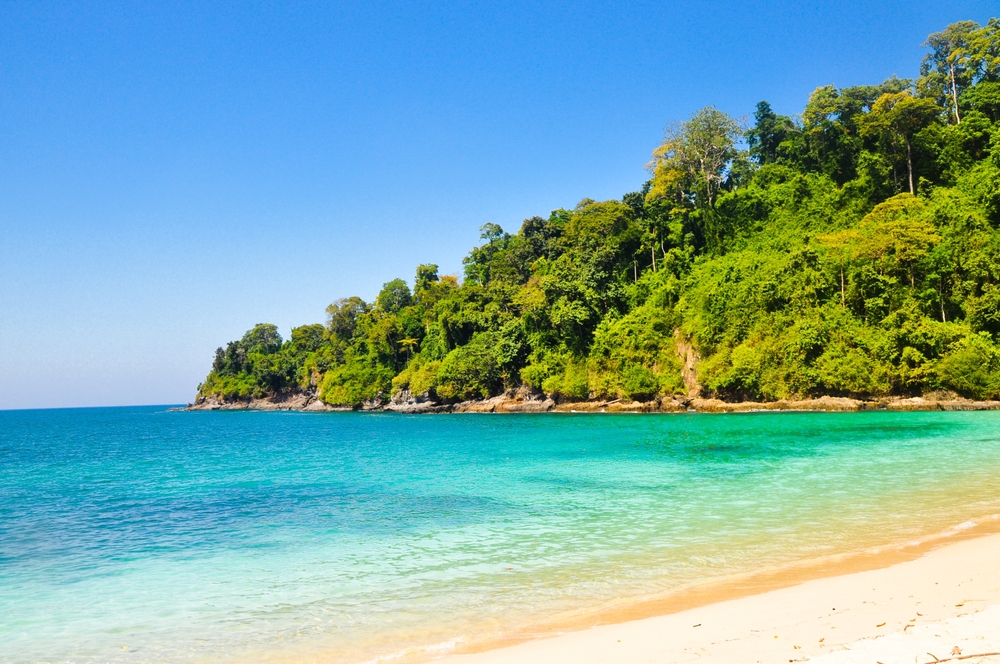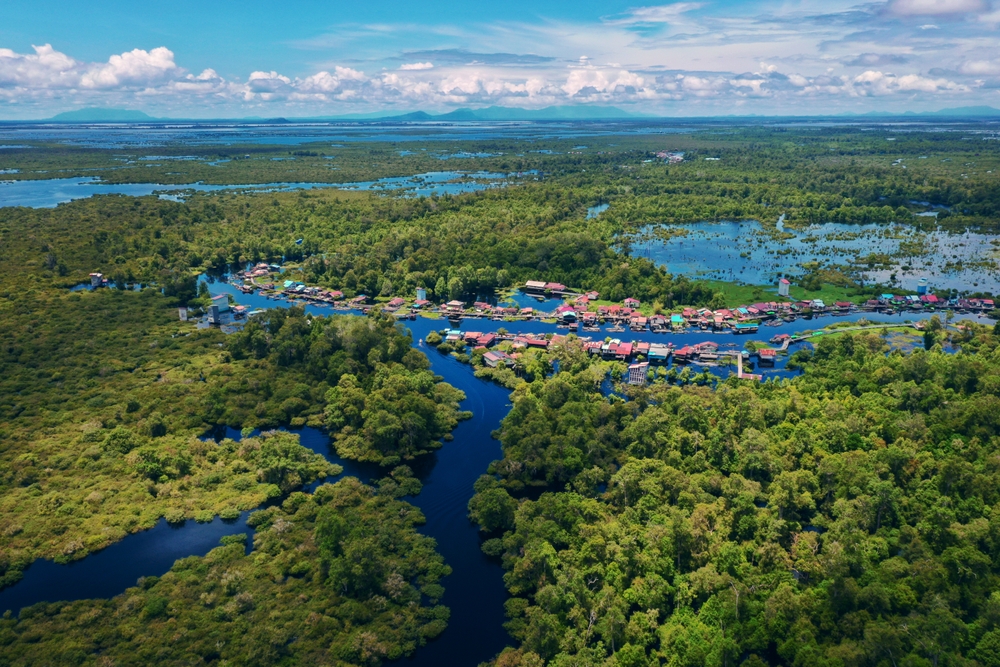Mount Halimun Salak Overview
Mount Halimun Salak National Park, locally known as Taman Nasional Gunung Halimun Salak, is a stunning protected area located on the island of Java, Indonesia. Spanning an area of approximately 156 square miles (405 square kilometers), this park lies in the provinces of West Java and Banten, nestled between the bustling urban centers of Bogor and Sukabumi.
It is named after its two iconic peaks, Mount Halimun (1,929 meters/6,329 feet) and Mount Salak (2,211 meters/7,254 feet), which dominate the landscape and provide a haven for a diverse range of flora and fauna. This park represents one of the largest stretches of primary rainforest remaining on Java, making it a crucial ecological treasure.
The terrain of Mount Halimun Salak National Park is characterized by steep mountain slopes, dense tropical rainforests, cascading rivers, and dramatic waterfalls. The area is a paradise of biodiversity, with verdant canopies of towering trees and a rich undergrowth of ferns, orchids, and mosses. The park’s rainforests are often shrouded in mist, adding to the mystical atmosphere.
Visitors can discover spectacular natural features like Curug Cigamea and Curug Pangeran, two of the park’s most popular waterfalls, which provide serene settings for exploration and relaxation. Rivers such as the Cisadane and Cikaniki meander through the park, supporting its lush ecosystem.
The wildlife in Mount Halimun Salak National Park is as impressive as its landscapes. The park is home to the critically endangered Javan leopard (Panthera pardus melas), a highly elusive predator that symbolizes the region’s conservation efforts. Other key mammals include the Javan gibbon (Hylobates moloch), silvery langur (Trachypithecus cristatus), and several species of civets and small deer.
Birdwatchers are drawn to the park for its avian diversity, which includes the endangered Javan hawk-eagle (Nisaetus bartelsi), widely regarded as Indonesia’s national bird. Other notable species include kingfishers, woodpeckers, and colorful sunbirds. The park’s rivers and streams also support aquatic life such as fish and amphibians.
Among the park’s popular features is the Canopy Trail, an elevated walkway that offers visitors an immersive view of the rainforest canopy. The Cikaniki Research Station is another highlight, providing insights into the park’s biodiversity and ongoing conservation projects.
Traditional villages, such as Kampung Kasepuhan Ciptagelar, are nestled within the park’s boundaries, allowing visitors to experience the culture and customs of the Sundanese people, who have coexisted with the natural environment for generations.
Visitors can engage with the park through guided hikes, birdwatching tours, and wildlife photography. Trekking to the peaks of Mount Halimun or Mount Salak is a rewarding challenge for adventurers, offering panoramic views of the surrounding landscapes. Camping is another popular activity, with designated sites providing opportunities to stay immersed in the pristine wilderness.
The park faces conservation challenges, including deforestation, illegal poaching, and encroachment by nearby agricultural activities. However, collaborative efforts between the Indonesian government, local communities, and conservation organizations have yielded successes, such as reforestation initiatives and wildlife monitoring programs. These efforts aim to preserve the park’s unique ecosystem for future generations while balancing the needs of its human and non-human inhabitants.








































































